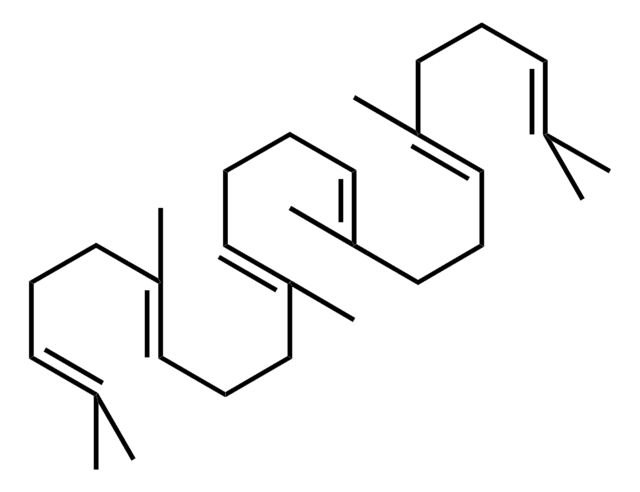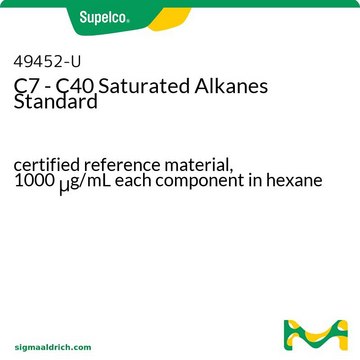Kluczowe dokumenty
80165
Phytane
analytical standard
Synonim(y):
2,6,10,14-Tetramethylhexadecane
About This Item
Polecane produkty
klasa czystości
analytical standard
Poziom jakości
Próba
≥95.0% (GC)
okres trwałości
limited shelf life, expiry date on the label
metody
HPLC: suitable
gas chromatography (GC): suitable
bp
69-71 °C/0.001 mmHg (lit.)
gęstość
0.791 g/mL at 20 °C (lit.)
Zastosowanie
environmental
food and beverages
Format
neat
ciąg SMILES
CCC(C)CCCC(C)CCCC(C)CCCC(C)C
InChI
1S/C20H42/c1-7-18(4)12-9-14-20(6)16-10-15-19(5)13-8-11-17(2)3/h17-20H,7-16H2,1-6H3
Klucz InChI
GGYKPYDKXLHNTI-UHFFFAOYSA-N
Zastosowanie
Opakowanie
Kod klasy składowania
10 - Combustible liquids
Klasa zagrożenia wodnego (WGK)
WGK 3
Temperatura zapłonu (°F)
Not applicable
Temperatura zapłonu (°C)
Not applicable
Środki ochrony indywidualnej
Eyeshields, Gloves
Wybierz jedną z najnowszych wersji:
Masz już ten produkt?
Dokumenty związane z niedawno zakupionymi produktami zostały zamieszczone w Bibliotece dokumentów.
Nasz zespół naukowców ma doświadczenie we wszystkich obszarach badań, w tym w naukach przyrodniczych, materiałoznawstwie, syntezie chemicznej, chromatografii, analityce i wielu innych dziedzinach.
Skontaktuj się z zespołem ds. pomocy technicznej





![Benzo[ghi]perylene analytical standard](/deepweb/assets/sigmaaldrich/product/structures/154/740/c50ff1be-dfb4-4159-a98c-9cecf9206ad3/640/c50ff1be-dfb4-4159-a98c-9cecf9206ad3.png)

